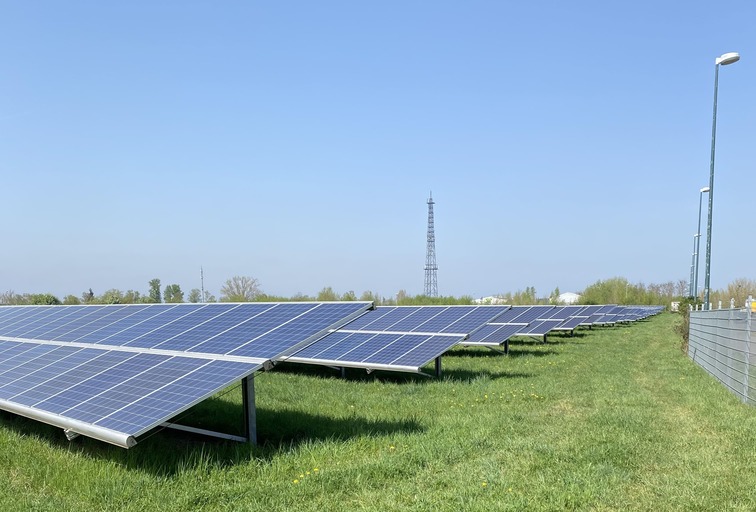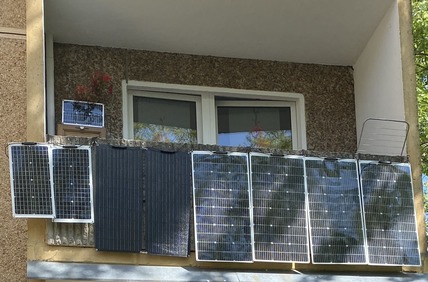Home ==> Passive Income ==> Investments in Solar Energy
Solar Panels as an Investment: Profitability, Payback Period, and Real Estate Value Growth
| Region | Average Return (% annually) | Payback Period (years) | Government Support | Real Estate Value Growth |
|---|---|---|---|---|
| USA | 10–15% | 6–8 years | High (tax benefits, subsidies) | +4–6% |
| Germany | 8–12% | 7–9 years | Stable (Feed-in Tariffs, KfW loans) | +3–5% |
| France | 7–10% | 8–10 years | Moderate (home solar subsidies) | +2–4% |
| Russia | 4–7% | 10–13 years | Weak (limited regional programs) | +1–2% |
| Kazakhstan | 6–10% | 7–10 years | Moderate (state RES program) | +2–3% |
In 2024, global investments in renewable energy surpassed $2 trillion for the first time, with nearly a third allocated to solar energy. According to the International Energy Agency (IEA), by 2030, solar panels will supply over 20% of the world’s electricity demand. In the U.S., according to BloombergNEF reports, rooftop solar installations increase property value by an average of 4–6%. Europe shows similar trends, while the post-Soviet region is growing more slowly but with undeniable investment potential.
Home Investments: Is It Worth Installing Solar Panels on the Roof?
Installing solar panels on a private home is not only an environmental contribution but also a sound financial decision. The average cost of a 5–6 kW system in Europe or the U.S. is $10,000–15,000, including installation and inverter. The payback period is 6 to 10 years, depending on electricity rates and subsidies. After break-even, the owner enjoys pure savings: about $1,000–1,500 annually on electricity, totaling up to $30,000 over a 25-year panel lifespan.

Moreover, in countries like Germany, France, and the U.S., "net metering" schemes allow selling excess electricity back to the grid. This turns a home into a micro-generator and the owner into an "energy shareholder" with passive income.
Large Investments: From Solar Parks to Energy Company Stocks

For institutional investors, funds, and private investors with capital from $100,000 and up, solar energy offers various avenues: building solar parks, green bonds, buying shares in producers (e.g., First Solar, Enphase, Canadian Solar), or investing in infrastructure projects through REITs.
Capital returns in the solar generation industry consistently exceed 10–12% annually. In some cases, with favorable loans or government support, up to 15–18%. With tax incentives (e.g., ITC in the U.S.), investments become even more attractive.
Passive Income: Can Solar Energy Generate Profits Without Effort?
Yes, investments in solar panels and solar assets are a form of passive income. The idea is that after the initial investment (whether installing equipment or buying a financial instrument), income flows without active participation from the owner.

Home solar systems reduce electricity bills and can earn income via net metering. Investments in stocks, bonds, or REITs focused on solar are fully passive and require only asset selection.
| Form of Investment | Passivity | Comments |
|---|---|---|
| Solar panels in a private home | Almost full | Requires 1–2 annual maintenance visits after installation |
| Buying solar company stocks | Full | Income through price appreciation and dividends |
| Investing in solar parks | Moderate | May require performance monitoring and reporting |
| Renewable energy project bonds | Full | Fixed coupon income – completely passive |
Thus, solar energy offers different levels of passivity – from partial involvement to full hands-off investing. All forms can provide stable and predictable returns.
Payback and Property Value Growth
According to Lawrence Berkeley National Laboratory, homes with solar panels in the U.S. sell for $15,000 more on average than similar homes without them. In Europe, especially in Germany, France, the Netherlands, and Scandinavia, "solar homes" are considered premium properties. Besides value growth, they sell 20–30% faster.
Even in CIS countries (especially Kazakhstan and Ukraine), where the market is still developing, installing solar panels is already seen as long-term added value. In Russia, despite weak institutional support, the number of home solar installations is slowly growing, helped by rising electricity rates and the growth of off-grid solutions.
Where to Invest: Comparing the U.S., Europe, and Russian-speaking Regions
- USA: developed system of subsidies, tax benefits, green bond market, and active stock market. High demand for private solar systems.
- Europe: mature market, especially in Germany, Spain, and Italy. Governments actively support solar infrastructure. High competition but stable income.
- Russian-speaking countries: Kazakhstan and Uzbekistan show increasing interest due to high sunshine days. Russia has a limited but promising market, especially in the south and off-grid areas.
Risks and How to Mitigate Them
Main risks include technology (equipment obsolescence), legislation (tariff/subsidy changes), climate (sunshine levels), and currency (import costs). However, advances in tech (e.g., heterostructure panels with 24% efficiency) and falling equipment prices help offset many risks.
Investment optimization includes insuring equipment, diversification (e.g., owning stakes in several solar projects via ETFs), and choosing reliable contractors with long-term warranties (usually 20–25 years).
The Future: Solar Panels as Part of Energy Independence

Investing in solar panels is not just about income but a strategic bet on resilience. Amid energy crises, geopolitical instability, and climate change, decentralized generation becomes a necessity. Those investing today will own not just profitable assets tomorrow, but freedom – energy, financial, and ethical.
Unexpected Fact: Solar Panels on Mars Already "Generate Income"
Solar panels are used not only on Earth. NASA rovers on Mars are powered by solar systems and work for years. While they don’t generate dollar income, they produce knowledge – an asset that grows in value exponentially. Who knows, maybe one day solar energy will underpin the economy of other planets. For now, we have one real market – Earth. And it is now coming under solar management.
Published:
==> Back to Home